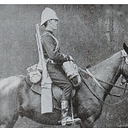What really is Brexit?
Before the vote, all sides agreed publicly — many times — that the result of the EU Referendum would be implemented. It was a binary choice — Remain or Leave.
A Leave vote meant leaving the EU, its institutions, it's Single Market, its Customs Union, all its tens of thousands of laws, its jurisdiction by a foreign power, its demands for vast annual payments, its Defence Union, it's Common Agricultural and Fishery Policies, etc. It was to be a once in a generation decision. The then Prime Minister, David Cameron, even said Article 50 would be triggered the next day.
After the vote, everyone — even the LibDems — agreed to honour and implement the result. Below is a summary of what was understood by all sides. What follows really is Brexit.
1 The UK should be a fully independent and sovereign country again
2 No jurisdiction by the European Courts — UK law must be supreme
3 No more massive annual UK payments to the EU
4 No freedom of movement — full UK autonomy over immigration policy
5 No membership of the EU Single Market or anything like it
6 No membership of the EU Customs Union or anything like it
7 No ‘regulatory alignment’ of British goods, except for goods exported to the EU
8 Full UK ability to implement new international trade deals
9 No submission to the EU Common Agriculture and Fisheries Policies
10 No involvement in the EU Defence Union in any form. Cooperation only when in the UK’s interests
11 No change in the status of Northern Ireland and Gibraltar
